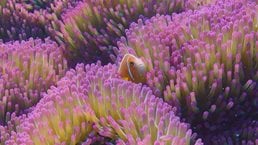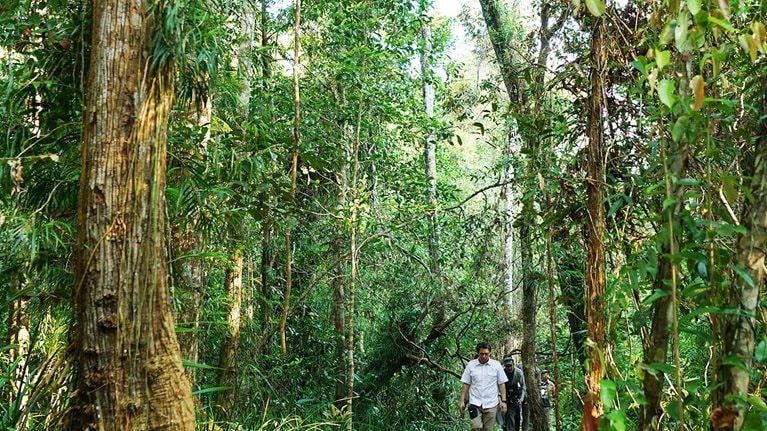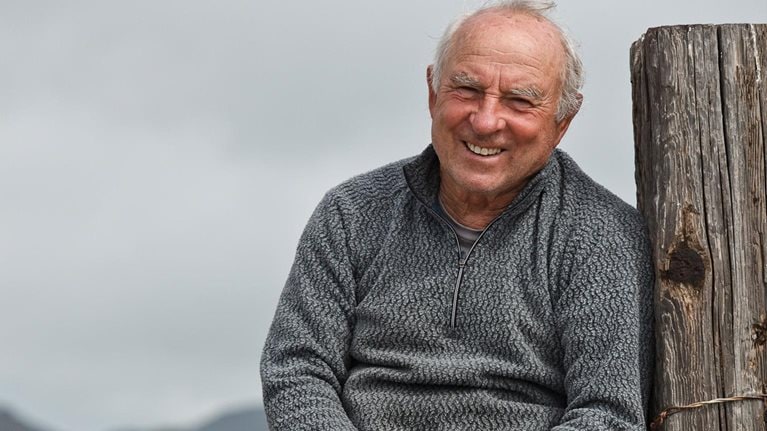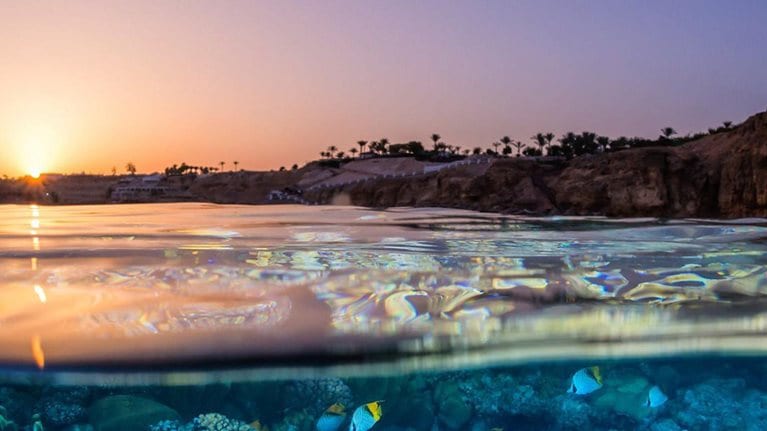Home to 4.5 million people, Panama is considered one of the most biodiverse countries in the world, with over 10,000 plant species, more than 200 mammal species, and over 900 indigenous bird species. Its abundant natural heritage prompted the Panama government to commit in December 2022 to the Global Biodiversity Framework, which aims for nations to take urgent action to stop and reverse biodiversity loss by 2030, thereby building a better future in harmony with nature.
Now, Panama has become one of the first countries in the world to develop a comprehensive implementation plan to action the Global Biodiversity Framework (GBF). This plan sets out to be bold and transformative, and is designed to protect the nation’s natural ecosystems and mitigate the effects of climate change, while maximizing the socioeconomic benefits of investments in natural capital.
Milciades Concepción talked to McKinsey’s Duko Hopman about Panama’s view on conserving its natural biodiversity and the steps being taken to implement its 30x30 program as soon as possible. An edited version of their conversation follows.
McKinsey: What is the importance of the Global Biodiversity Framework for Panama, and what made you decide to take action?
Milciades Concepción: Panama has significant natural capital and plays an important role in global diversity and connectivity. Because of this, we have established ambitious plans regarding sustainable development, energy, climate change, and biodiversity. For a start, we have updated the country’s commitments to biodiversity conservation, as reflected in our National Biodiversity Strategy and Action Plan through to 2050. We have also committed to an Economic Reactivation Plan, which aims to create an environmental model that can transform the country’s economic, social, and financial strategies. This plan will help to reduce biodiversity loss by proposing transformative actions for 2030, which will allow natural ecosystems to recover.
In 2021, Panama joined the High Ambition Coalition (HAC) for Nature and People, an intergovernmental group that pioneers a global agreement to protect at least 30 percent of the world’s land and ocean by 2030—dubbed the “30x30” target. In 2022, we agreed to address this target through our 30x30 Implementation Program, which aims to stop species loss and protect vital ecosystems, while mitigating the effects of climate change. Our goal is high-quality conservation and effective implementation, including initiatives to improve conservation management efforts in existing protected areas (PAs), as well as conservation and restoration efforts outside of PAs.
Read more about Natural Capital and Nature
McKinsey: How did you design the Panama 30x30 program and what is the expected implementation timeline?
Milciades Concepción: We have worked on the Panama 30x30 program through an organized and coordinated structure with the participation of the private and public sectors, NGOs, Indigenous authorities, and research centers. Based on scientific data and geospatial analysis of land and marine protected areas, new transformative initiatives have been proposed to achieve quality conservation within the 30×30 framework.
To oversee implementation, we established the Center for Conservation and Sustainability (CONSOS) that has digital capabilities to monitor progress regarding the many efforts we have developed. CONSOS is made up of the Ministry of Environment, NGOs, and other key actors, and has five focus areas: land spatial, marine spatial, financial, regulatory, and change management. In the past six months, we have already developed three main objectives, leading to the creation of the first three phases.
The goal of the first phase was to establish why the GBF is important to Panama and the benefits we aim to generate through its implementation. We defined these priorities through multidisciplinary workshops involving key stakeholders from the community and the public, private, and academic sectors. We established a baseline of existing PAs and other effective conservation measures to understand the gaps in these priorities. This has resulted in clear program objectives, key performance indicators, and identified control-tower governance and methodology.
The Panama 30x30 program is changing how the Ministry is viewed across the government and to the outside world: from a cost-center to an investment opportunity.
In the second phase, we aimed to define a plan based on conversion risk, optimization of results, and existing base initiatives for the conservation of both ocean and land. A detailed spatial conversion risk map was created, based on geospatial analytics of the maritime and terrestrial territory. A set of 30x30 scenarios was developed, drawn from selected spatial variables, as well as a rapid assessment of the costs, benefits, and ease of implementation of each scenario. In addition, we identified legislative, financial, and change management initiatives that would support the full implementation of the GBF, including, for example, support for regenerative agricultural practices outside of PAs.
The third phase focused on building an integrated implementation plan with a business case and funding rationale for each initiative. We created a list of conservation and funding priorities needed to achieve the GBF implementation, including cost estimation, timeline, and designation of initiative leaders. We also devised spatial mapping of financial and conservation instruments to produce a detailed “cost curve” for each maritime and land initiative. We then established a central control tower to house the capabilities to support the hundreds of initiative owners.
McKinsey: What is the role of nature for the iconic Panama Canal and other key components of the economy?
Milciades Concepción: The 30x30 program enables the transformation of productive processes, mainly in the agricultural, tourism, and energy sectors, so that sustainability, climate change, and biodiversity conservation criteria are effectively incorporated. For example, we worked with the Panama Canal Authority to expand protection of forested areas that ensure water recharge of the Canal.

A small island nation has big plans for ocean conservation commitments
McKinsey: How will Panama finance the implementation of its 30x30 program and what do you foresee as challenges?
Milciades Concepción: Given the many benefits that will flow from protecting our natural capital, strengthening our public finances for biodiversity is important. We are working to establish a financial architecture to implement projects aligned with the global biodiversity goals in accordance with the 2030 agenda.
The execution of the program will require an investment of approximately $265 million over the next eight years, ranging from $33 million to $45 million per year. The activities being implemented include effective management of protected areas, waste management in coastal communities, restoration of forests and mangroves in and outside of PAs, conservation of areas at risk of degradation, development of sustainable agriculture and fisheries, training communities, and the implementation of the Paris Agreement (for example, through carbon credits).
We have the support of the Ministry of Economy and Finance to ensure the allocation of public investment resources in the identification and sequencing of various financial institutions. We’re also coordinating with strategic partners, including international agencies that are helping with financial resource allocation―for example, the Global Environment Facility is advising on how to effectively sustain a financial structure for environmental management and biodiversity.
One of our main priorities is to work closely with Indigenous groups—as they are key stakeholders and owners of many of the priorities outlined in this plan—as well as forging partnerships with the private sector as a strategic player.
McKinsey: What guidance would you give other countries planning their own 30x30 initiatives?
Milciades Concepción: Our initiative should serve as a guide: we are a carbon-negative country, a Blue Leader, and a pioneer in achieving the 30x30 goals. Our main lesson has been that cross-sector management with different actors of society to achieve the expected goals is key—but so is early and rapid implementation action on natural capital protection and investment.


